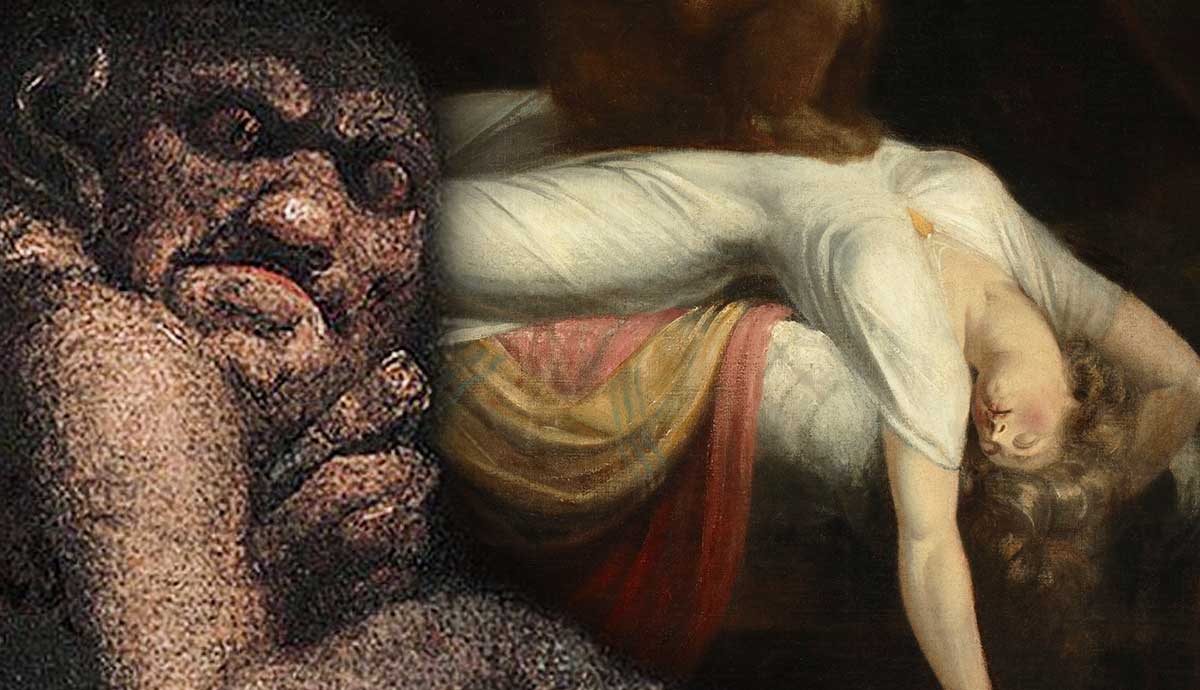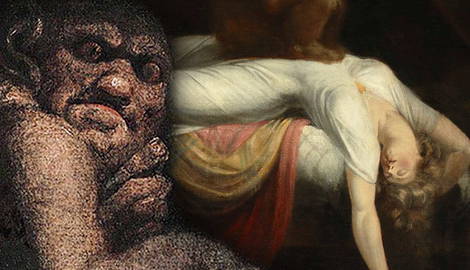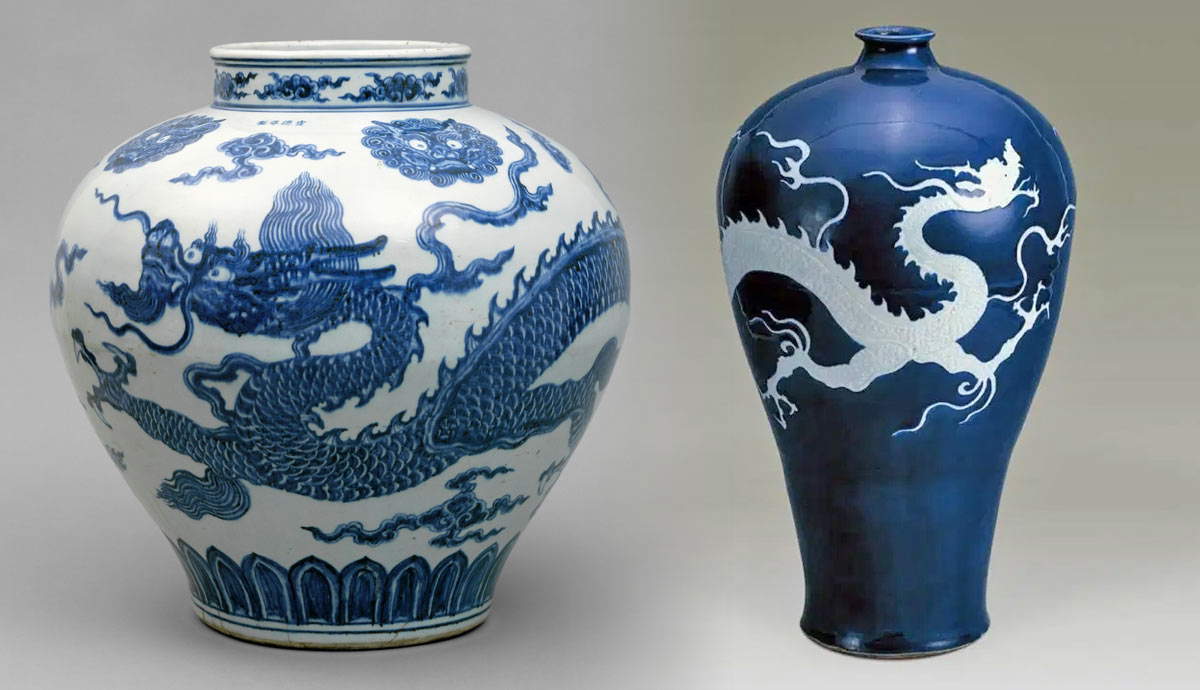
The public reacted to Henry Fuseli’s The Nightmare immediately after it was exhibited at the Royal Academy of Arts in 1782. It rattled audiences, spurring artists to copy the painting into prints and satires for a wider distribution of the image. As the image spread, so did its fame, and today it has become one of the most influential horror paintings in the history of art.
Who Was Henry Fuseli?

Henry Fuseli did not initially have the goal of becoming a painter. He was born in Zurich in 1741 and was highly educated in humanities. He also spoke four languages. After his mentor introduced him to Milton, Shakespeare, Homer, and Dante, he became interested in literature and writing. In 1763, he published a pamphlet criticizing the city of Zurich’s administration. Officials forced him out of the city and he subsequently traveled across Germany, France, and England, looking for work in the literary field.
In 1768, Fuseli was encouraged by his friend Joshua Reynolds to become a painter instead of pursuing a career in the literary field. It took two years to convince Fuseli, but in 1770, he traveled to Italy to hone his artistic skills and network with other artists from across Europe. He stayed there for ten years, returning to England in 1780.
What Is The Nightmare About?

The Nightmare was completed in 1781 and exhibited for the first time at the Royal Academy of Arts in London in 1782. It features a vulnerable woman sleeping in a stark white gown that contrasts the rest of the painting’s dark shadows, drawing the focus to her unconscious body that is being visited by a mare. A mare is a creature of Germanic folklore, a malevolent spirit that sits on the chests of sleepers to induce unpleasant dreams. Nearly all Germanic languages, including English, remember this folkloric creature linguistically with the word nightmare in English or mareritt (mare-ride) in Norwegian.
Some professionals theorize that mares were a way of rationalizing sleep paralysis, which likely would have been interpreted as evil spirits by a superstitious population. The horse peeking through the rich red curtains in the background was a later addition, likely meant to be a play on words, as female horses are called mares. The supernatural mare characteristically perches on the woman’s chest but stares knowingly at the viewer, as if it could sense the audience’s eyes. This makes the scene seem confrontational and personal.
Tenebrism in The Nightmare

Fuseli’s use of light and dark in The Nightmare shifts the atmosphere to be mysterious, quiet, and vulnerable. Techniques like chiaroscuro and tenebrism are utilized for this effect and are paired with rich, bold colors like deep red to enhance the dramatic effect. These techniques are baroque in origin, with Michelangelo Merisi da Caravaggio being a prime example of tenebrism in art.
For instance, in John the Baptist in the Wilderness, Caravaggio uses extreme tenebrism to create a moody atmosphere within the painting. The background is so dark it is nearly black. It makes John the Baptist’s body emerge from the canvas with a sense of realism. The shadows that fall on him are severe and cause a dramatic scene of three-dimensional realism through light placement on the figure. His cloak of ruby red warns of upcoming trouble. In John the Baptist’s case, the trouble is his beheading, but in Fuseli’s The Nightmare, the sense of danger surrounding the mare is heightened by the inflammatory color. She is in trouble, as she is being held mentally captive by a marvelous supernatural being, and she has fallen victim.
Art historians believe that Fuseli could execute tenebrism in The Nightmare and create a spooky atmosphere skillfully because he had plenty of practice with his previous works. Almost all of his previous paintings focused on dramatic depictions of scenes of Shakespeare and Milton. In a sense, his paintings could usually be read like a story rather than as a snippet of time in which something horrifying is occurring, like in The Nightmare.
What’s on Its Back?

The mystery and moodiness surrounding The Nightmare inspired prominent authors, like Mary Wollstonecraft Shelley, Edgar Allan Poe, and Erasmus Darwin. It has become a painting that most modern viewers have at least seen photos of before, possibly referenced in media and used in commercial goods, but the painting on the back of The Nightmare is rarely mentioned. The woman’s identity and the date are unknown, though her clothing and hairstyle date the painting to sometime in the late 18th century.
The woman in the portrait peers calmly at the viewer, lifting a braid over her shoulder. Her dress is light and elegant, and her hair is towering like the fashions of the day required of accomplished, wealthy women. She holds a paper in her hand, carrying a secret message that the audience will never know. Art historians are unsure if the woman is the same one that’s depicted in The Nightmare on the other side. However, it certainly adds an unsettling factor to the portrait to see her unknowingly staring out at viewers with such serenity, meanwhile, there is a nightmare waiting immediately behind her on the other side of the canvas. She is ignorant in her one-sided existence, unaware of the ever-present evil that lurks nearby.
The Public Outrage

The late 18th century operated under the Enlightenment, a philosophical movement meant to bring societal progress concerning rationalism, education, tolerance, and liberty. Crowds were accustomed to the Royal Academy of Arts exhibiting paintings with a moral, historical, or philosophical message. To see a horrifying scene exploring the horror genre with no moral message amidst hundreds of other paintings depicting things like aristocratic portraits, landscapes, and history paintings would have been shocking to audiences. Exhibition goers reacted with disgust and horror that such a painting would be displayed in a prestigious institution.
The Nightmare was immediately copied for print by an artist named Thomas Burke. This allowed the artwork to be distributed, giving it a wider audience than only those that attended the exhibition. Thomas Burke was an engraver from Ireland who moved to London in 1765, working on a multitude of projects for the Royal Academician Angelica Kauffman to recreate her paintings for wider distribution. Burke worked with John Raphael Smith, the publisher of the engraving. He often used a stippling technique for his engravings, creating rich contrasts.

The public reaction to Henry Fuseli’s The Nightmare was initially shock and rejection due to the horror presented and the lack of enlightened values being depicted within an environment such as the Royal Academy of Arts in 18th-century London. However, it left a lasting impression, not only on the contemporary creatives of Fuseli’s day who recreated his work into distributable prints and satires but throughout the following centuries as well. The Nightmare has become a recognizable painting that still garners interest because of Fuseli’s ability to intrigue the human psyche of his viewers. Where there is morbidity, there is curiosity.
Despite the initial shock the painting caused when it was first exhibited, it became wildly popular almost immediately. Fuseli created at least three replicas himself. In his 1790-91 version, the image is mirrored and positioned at a different angle. The woman’s sleeping body is in a different position, and the mare’s face seems arguably more devilish. The horse, too, is much more central in the recreated painting, glowing white with pupilless eyes. Though the 1790-91 version of The Nightmare portrays the same scene with the same creatures, the change in lighting causes it to lack the sensuality of the original painting. Instead, the terror portrayed is harsher and more abrasive.
Satirical Versions of Henry Fuseli’s Nightmare

As distribution spread the image across society, more recreations came out but with other artists’ alterations. Satire was an especially prominent genre of art in the 18th century, and it was often done in the form of prints, making it more available to the lower and middle classes. Thomas Rowlandson recreated The Nightmare in 1784 with a satirical print for distribution. The printed etching is not colored but is made of fine lines, placed appropriately to indicate light and shadow. The mirrored image and placement of the man’s knee are very similar to Fuseli’s 1790-91 recreation of the painting, while the horse’s head and the face of the mare are similar to the 1781 original.
Rowlandson was famous for his satirical prints, which focused on political or social critique and observation. He worked on other projects, such as book illustrations or private erotic content for his patrons. The majority of his work was ribald or generally coarse in content. In The Covent Garden Nightmare, Rowlandson takes the sensuality of the woman’s draped pose and applies it to a contemporary politician, Charles James Fox, who was known for his gambling addiction, vain and raucous personality, flamboyant clothing style, womanizing tendencies, perceived conspiracy theories, and varying political scandals in which he argued with the monarchy. Thomas Rowlandson’s print of Charles James Fox as the woman in Fuseli’s The Nightmare would have been created shortly after Fox’s loss in the 1784 election, in which Fox faced off against a well-loved politician named William Pitt the Younger, whom Rowlandson also satirized during the same election.










